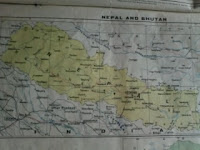Adult are grown-up people. Adult education means educating those adults who are not educated. In some countries, there is little need for adult education because education is compulsory and everybody id educated. In some countries, there is need for adult education because the majority of the people are uneducated because education is not compulsory in our country.
Our country cannot advance until the majority of the adults are educated. It is the adults who form the working class. If they are not educated they cannot understand the problems of the country. They cannot study and understand the development plans. We cannot expect them to co-operate in such plans when they do not understand them. uneducated people can be exploited by selfish persons. They are conservative and believe in superstitions and traditional methods. They do not know the changes that have taken place in the world. They are slow to move with the times.
Nepal is country of peasants. The prosperity of our country are illiterate and ignorant. They follow the traditional methods of agriculture. They do not use improved methods of cultivation and new types of seeds and manure. They cannot market their products at a good profit.
Our country cannot advance until the majority of the adults are educated. It is the adults who form the working class. If they are not educated they cannot understand the problems of the country. They cannot study and understand the development plans. We cannot expect them to co-operate in such plans when they do not understand them. uneducated people can be exploited by selfish persons. They are conservative and believe in superstitions and traditional methods. They do not know the changes that have taken place in the world. They are slow to move with the times.
Nepal is country of peasants. The prosperity of our country are illiterate and ignorant. They follow the traditional methods of agriculture. They do not use improved methods of cultivation and new types of seeds and manure. They cannot market their products at a good profit.



















